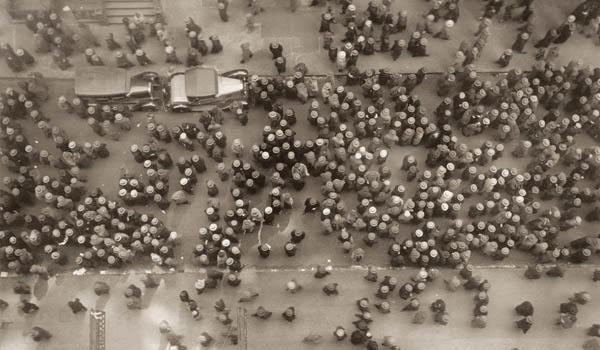Original post:
For what it's worth, we're bullish.
From ValueWalk:
When Does the Story Break? When Does The Market?
When Does the Story Break?
It’s always about timing. If it’s too soon, no one understands. If it’s too late, everyone’s forgotten.
– Anna WintourSaint Laurent has excellent taste. The more he copies me, the better taste he displays.
– Coco ChanelBeauty, to me, is about being comfortable in your own skin. That, or a kick-ass red lipstick.
– Gwyneth PaltrowFor, dear me, why abandon a belief Merely because it ceases to be true? Cling to it long enough, and not a doubt It will turn true again, for so it goes. Most of the change we think we see in life Is due to truths being in and out of favor.
– Robert Frost, “The Black Cottage”Lord I am so tired How long can this go on?
– Devo, “Working in a Coal Mine”Until an hour before the Devil fell, God thought him beautiful in Heaven.
– Arthur Miller, “The Crucible”He can’t think without his hat.
– Samuel Beckett, “Waiting for Godot”Perhaps the most irrational fashion act of all was the male habit for 150 years of wearing wigs. Samuel Pepys, as with so many things, was in the vanguard, noting with some apprehension the purchase of a wig in 1663 when wigs were not yet common. It was such a novelty that he feared people would laugh at him in church; he was greatly relieved, and a little proud, to find that they did not. He also worried, not unreasonably, that the hair of wigs might come from plague victims. Perhaps nothing says more about the power of fashion than that Pepys continued wearing wigs even while wondering if they might kill him.
– Bill Bryson, “At Home: A Short History of Private Life”
The most common question I get from Epsilon Theory readers is when. When does the market break? When will the Narrative of Central Bank Omnipotence fail? To quote the immortal words of Devo, how long can this go on? Implicit (and sometimes explicit) in these questions is the belief that this – whatever this is – simply can’t go on much longer, that there is some natural law being violated in today’s markets that in the not-so-distant future will visit some terrible retribution on those who continue to flout it. There has never been a more unloved bull market or a more mistrusted stock market high.
It’s a lack of love and a lack of trust that I share. I believe that public markets today are essentially hollow, as what passes for volume and liquidity is primarily machines talking to other machines for portfolio “positioning” or ephemeral arbitrage rather than the human expression of a desire to own a fractional ownership share of a real-world company. I believe that today’s public market price levels primarily reflect the greatest monetary policy accommodation in human history rather than the real-world prospects of real-world companies. I believe that the political risks to both capital market structure and international trade (which are the twin engines of global growth, period, end of story) have not been this great since the 1930’s.
Simply put, I believe we are being played like fiddles. That does NOT mean, however, that I think anything has to change next week … or next month … or next year … or next decade. The human animal is a social animal in the biological sense, and as such we are cognitively evolved to maintain our beliefs and behaviors far beyond what is “true” in an objective sense. This is, in fact, the core argument of Epsilon Theory, that there is no such thing as Truth with a capital T when it comes to the institutions and the social organizations that we create. There’s nothing more “natural” about our market behaviors than there is around, say, our fashion behaviors … the way we wear our clothes or the way we cut our hair. For 150 years everyone knew that everyone knew that gentlemen wore wigs. This was the dominant common knowledge of its day in the fashion world, absolutely no different in any way, shape or form than the dominant common knowledge of today in the investing world … everyone knows that everyone knows that it’s central bank policy that determines market outcomes. And this market common knowledge could last for 150 years, too.
I’m not saying that a precipitous change in market beliefs and behaviors is impossible. I’m saying that it’s not inevitable. I’m saying that it’s NOT just a matter of when. I’m saying that understanding the timing of change in market behaviors is very similar to understanding the timing of change in fashion behaviors, because both are social constructions based on the Common Knowledge Game. It’s no accident that the most popular way to relate that game is the story of the Emperor’s New Clothes.

Hats in the Garment District, 1930
Here’s a photograph Margaret Bourke-White took of the Garment District in 1930. Every single person on the street is wearing a hat. How did THAT behavior change over time? How did the common knowledge that All Men Wear Hats, or wigs or whatever, change? Does it happen all at once? Smoothly over time? In fits and starts? Who or what sparks this sort of change and how do we know? To use a five dollar phrase, what is thedynamic process that underpins the timing of change in socially-constructed behaviors, whether that behavior is in the investing world or the fashion world?...MOREThings change and organisms adapt.
In 1937 the Timely Climateer coat was the height of fashion at Saratoga:
|
